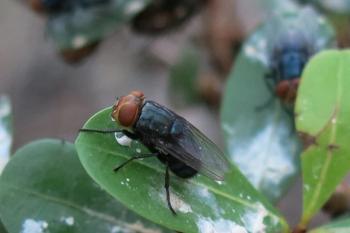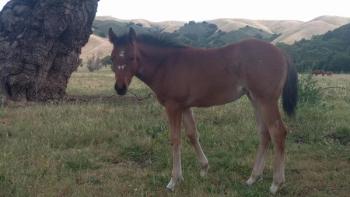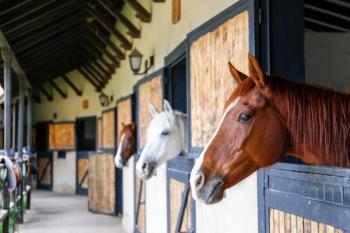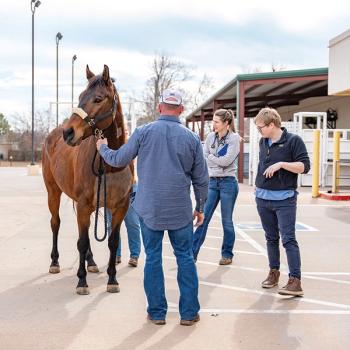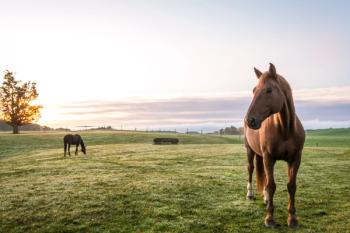
The spectacle of the mane event
An injury to a horse's leg results in an unusually hairy situation.
Horses are strange creatures in many ways. They don't have muscle tissue below their knee or hock, and when they have an injury which removes the skin, they get this horrible stuff we call proud flesh.
Now, don't get me wrong, proud flesh can be a good thing. God designed it to protect the horse and give it a way to heal and the horse still is able to run and move around to eat. But if the skin damage is extensive, the proud flesh becomes excessive and terrible scars or potentially deadly infection can occur.
The horse in this story had a really bad injury. All the skin was gone from the front of the knee to the ankle. It looked like a scene from a Freddy Kruger movie and the owner wanted it fixed. I assessed the situation and couldn't see a way to repair the massive tissue loss except to use a skin graft.
We often use a technique in horses called a punch graft. It's very clever when you consider it. Instead of taking a giant piece of skin from somewhere on the horse and transplanting it onto the wound, we simply take 4 mm punches of skin and put them into the flesh one little piece at a time. This allows the area where the grafts are taken to heal well, and the punches in the proud flesh spread a little like Bermuda grass.
On a wound this size, we will commonly take 100 to 150 punches of normal epidermis and transfer them to the wound bed. At the time I hadn't done this procedure very many times and the book said you could take the healthy skin tissue from the belly or underneath the mane. The people didn't want to spend a lot of money and I figured I could do the graft with the horse standing using local anesthetic (the horse feels no pain) and harvest the happy tissue from under the mane without having to use the added expense of general anesthesia.
I went to work. I clipped the hair from the side of the mane and the skin just adjoining it. Scrubbed it perfectly and began transferring happy tissue from this place under the main to the unhappy place on the front of the leg. The procedure went wonderfully. I placed all the grafts and worked hard for the next two weeks trying to keep those tiny pieces of healthy tissue happy in their new home on the leg.
After the two weeks had passed the two fellows that brought the horse came to get it and I sent them home with a long list of things to do to give these grafts the best chance of survival possible. These two men have great personalities and are wonderful to work for. They swallowed up every bit of information I gave them and I could tell, they were gonna do all they could to make this procedure successful.
When the horse left, the places we had taken the grafts from were totally healed and you couldn't even tell anything had even happened. The graft bed looked great and I was hopeful that the terrible injury was on its way to contracting down and this horse was gonna be normal in just a few months.
Time passed and I kinda forgot about that horse. One Tuesday afternoon about six months later a green pick up pulled into the parking lot and out emerged these same two fellas. I was working on another horse but I could tell from a long ways off that they were laughing.
They strolled up with a little bit of a smirk and a lot of laugh on their faces. I asked them how that horse had turned out and how come they had not called like I asked them to. They just stood there and giggled. In fact they giggled so much that I was getting a bit uncomfortable.
“You did the best job of fixing a giant injury of any veterinarian in the world. The thing is completely healed and if it weren't for a few minor details no one would ever even know there was a problem.” And then they began to laugh hard again.
“We just were headed to a rodeo and wanted to stop and thank you so much for getting that horse back to where we could use him and didn't have to put him to sleep. But we also had to stop and razz you just a bit,” they said.
Razz me a bit? If the thing was healed and they were roping with it, what was there to razz about?
I stood there with a perplexed look on my face as one of them went and unloaded the horse. I was maybe 30 yards from the trailer and the second the horse started walking toward me I knew what all the laughing was about.
I seems that when I was taking the skin from under the mane to use as the grafts, I was a little to close to the mane. And as it turns out, there is a lot if difference in mane hair and normal body hair on a horse. You know, mane hair is large in diameter and gets a foot or so long. Body hair is fine in diameter and gets about an inch long.
Well, I may have gotten a little to close to the mane. In fact I know I did. Because walking toward me, from across the parking lot, was a wonderfully healthy horse, with hair that Fabio would have been proud of growing from the front of his leg.
Yes. It was blowing in the breeze like the hair of a Sports Illustrated model walking down the beach. I was flabbergasted. One of the men told me not to worry. His wife shaved her legs and he would shave his horse's. They just left it there to give me a hard time and asked if they could use my clippers before they went to the rodeo. They were so happy that the horse lived and assured me they weren't upset about having a horse with two manes.
It was just then I remembered Paul. He was a guy that worked at a gin when I was a kid who had all the skin ripped off the palm of his hand by some equipment in the cotton processing process. They grafted skin from his fanny to his hand and later he had butt hair growing on the palm of his hand. I always use the stomach for punch grafts now. Live and learn.
Newsletter
From exam room tips to practice management insights, get trusted veterinary news delivered straight to your inbox—subscribe to dvm360.


